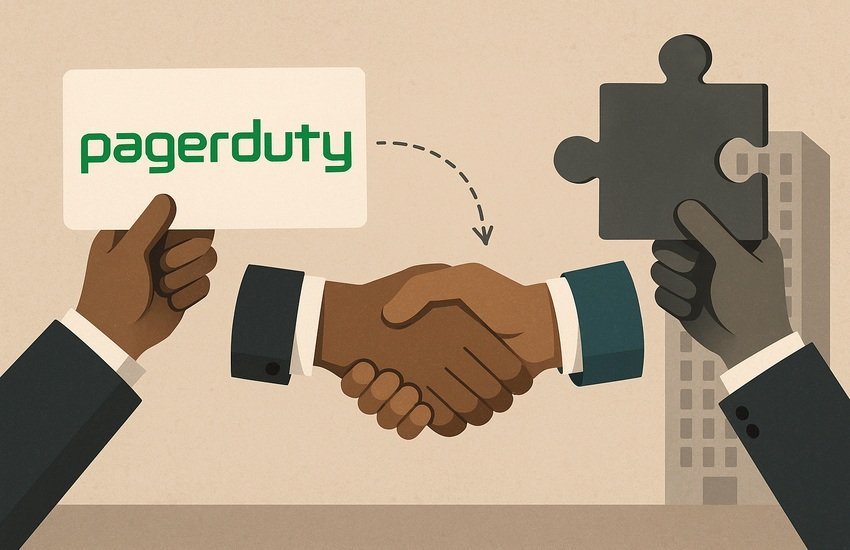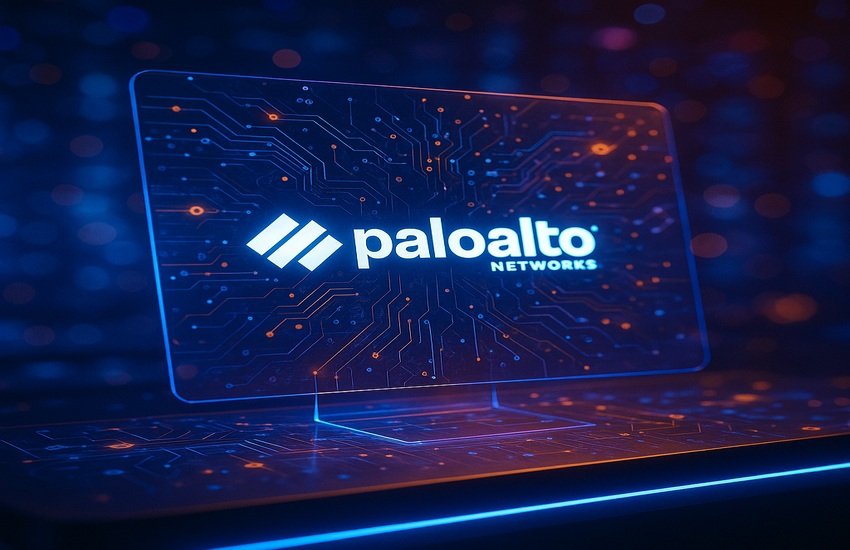Continue Reading With Our 7-Day Free Trial
San Francisco-based PagerDuty has become the latest software player to attract serious acquisition interest from both strategic acquirers and private equity firms. Following an uptick in inbound approaches, the company has retained Qatalyst Partners to explore potential strategic alternatives — including a sale. While the process remains at an early stage, multiple sources indicate that both financial sponsors and technology majors are assessing the opportunity. PagerDuty, with its high-margin SaaS model, mission-critical digital operations platform, and growing adoption in AI-native enterprises, represents a compelling asset at a time when software valuations have broadly corrected. The company’s shares surged over 10% on the news, pushing its market value to roughly $1.5 billion. Although PagerDuty explored a sale in 2023 without reaching a deal, today’s landscape is far more favorable — marked by stronger profitability and a sharp uptick in sector consolidation. With momentum on its side, PagerDuty is emerging as a highly sought-after strategic asset in an increasingly competitive market. Let us walk through the key factors driving the renewed surge of interest in PagerDuty.
Strategic Buyers See A Scalable Platform For AI Operations & Incident Management
Strategic acquirers in the observability, cybersecurity, or cloud infrastructure segments are likely eyeing PagerDuty as a bolt-on platform that enhances their ability to serve DevOps and IT operations teams with real-time incident management and automation capabilities. PagerDuty has evolved from a niche on-call tool for developers into a full-fledged digital operations cloud, integrating AIOps, automation, customer service applications, and enterprise-grade AI offerings such as PagerDuty Advance. With more than 700 integrations and deep hooks into critical tools like AWS Incident Manager, Microsoft Teams, and Zoom, its ecosystem appeal is strong. Strategic buyers with broader platforms — such as ServiceNow, Cisco, or Salesforce — could plug PagerDuty’s capabilities directly into their existing offerings to improve resilience, accelerate MTTR (mean time to resolution), and reduce operational risk for customers. The growing need for AI-enabled operations, especially among high-growth cloud-native and AI-first companies like Anthropic and Scale AI (both PagerDuty customers), makes its platform increasingly relevant. Moreover, PagerDuty’s FedRAMP Low authorization and pursuit of Moderate certification could position a strategic buyer to deepen federal exposure — a prized vertical for enterprise tech companies. Overall, strategic buyers see synergies in product breadth, platform reach, and customer expansion across the digital ops and AI infrastructure value chain.
Private Equity Firms Could Unlock Margin Expansion & Long-Term Growth
For private equity buyers, PagerDuty represents an attractive platform to apply operational efficiencies, margin expansion levers, and longer-term monetization strategies. With Q1 FY26 gross margins of 86%, free cash flow margins of 24%, and a raised full-year operating margin guide to 20%-21%, the business is demonstrating discipline and scalability. Still, there’s headroom for improvement. The company’s enterprise sales transition is still underway, with over 60% of its reps having less than one year of tenure. A PE firm could accelerate this ramp with focused sales enablement, tighter account management, and standardized playbooks to boost dollar-based net retention (currently 104%) and cross-sell newer AI and automation modules. Further, its recent pricing shift away from seat-based licenses to consumption-based and flexible enterprise pricing opens the door for repackaging opportunities and multi-year contract upsells. From a valuation standpoint, PagerDuty trades at a trailing EV/Revenue multiple of just 2.80x and an LTM Price/Sales of 3.04x — compelling when compared to historical software deal comps in the 6-8x range. PE sponsors could pursue a take-private path, optimize go-to-market motion, and relist or exit through a strategic sale once topline growth re-accelerates. With nearly $600 million in cash and short-term investments on hand, and a non-cash intensive model, PagerDuty could be structured efficiently in an LBO framework.
Multiple Growth Vectors Enable Post-Acquisition Upside For Any Buyer
PagerDuty’s diversified customer base, embedded presence in critical workflows, and expanding use cases offer numerous growth avenues for an acquirer. The company has over 15,000 paid customers and more than 32,000 total users on its platform, including marquee names like Cisco, Shopify, Zoom, and the New York Stock Exchange. Roughly 25% of enterprise customers expanded their deployments in Q1, despite execution issues. In addition to traditional IT incident management, PagerDuty is seeing fast-growing adoption in supporting AI operations — from managing hallucinations and rogue agents to optimizing observability cost sprawl and improving LLM response reliability. This positions the platform for sustained growth across both legacy and emerging verticals. Its expansion into public sector (over 700 government entities served), its deepening AWS partnership, and the introduction of generative AI agents like AI Scribe and incident summarizers indicate product-led growth momentum. With the right go-to-market scaling, particularly in international markets and federal accounts, buyers could extract significant value from PagerDuty’s platform across multiple end markets. Cross-selling these offerings through an existing global salesforce or channel could yield revenue synergies and reduce CAC over time.
PagerDuty’s AI Product Roadmap & Customer Base Could Attract Premium Valuation
From PagerDuty’s perspective, a potential acquisition — especially by a strategic buyer — could unlock access to larger customer bases, channel ecosystems, and capital resources to accelerate the adoption of its AI-native products. The company has heavily invested in both machine learning (AIOps) and generative AI agents such as PagerDuty Advance, AI Scribe, and automated incident postmortem tools. These are designed to reduce toil for engineering teams and improve productivity and resolution speed. Yet, adoption remains in early stages, and the company is still focused on demonstrating product-market fit and monetization. A buyer with stronger enterprise muscle could expedite enterprise integration, internal alignment, and feature bundling to accelerate penetration. Additionally, PagerDuty’s robust proprietary dataset of operational incidents, workflow behaviors, and resolution paths — built over 15+ years — represents a valuable AI training and inference moat that few others possess. A strategic buyer or PE platform with a broader data lake or infrastructure layer could integrate this data to refine adjacent AI models or offerings. Such a move could also help PagerDuty scale into other adjacencies like security incident response, compliance automation, or full-stack ITSM. By removing capital and scale constraints, a larger parent could help PagerDuty realize more of its long-term roadmap.
Key Takeaways
PagerDuty sits at the nexus of digital operations, AI infrastructure, and incident automation — a space becoming increasingly critical as enterprises scale complex cloud environments and grapple with reliability demands. The company’s ongoing shift from a bottoms-up to an enterprise-led go-to-market model is showing signs of traction, but also exposes it to sales execution risks and near-term top-line volatility. Valuation-wise, PagerDuty is trading at LTM EV/Revenue of 2.80x and LTM EV/Gross Profit of 3.36x, with NTM EV/EBITDA at 11.84x, offering a reasonable entry point relative to historical software transaction comps. The transition to profitability — evidenced by raised operating margin guidance and robust free cash flow — strengthens the investment case. However, churn in the commercial segment, execution gaps in enterprise retention, and leadership transitions (including the pending CRO appointment) may raise diligence flags. Overall, while acquisition interest is real and synergies are plausible, the outcome will likely depend on buyer conviction in scaling the AI-led platform story — and on PagerDuty’s own ability to stabilize and expand its enterprise base in the coming quarters.





